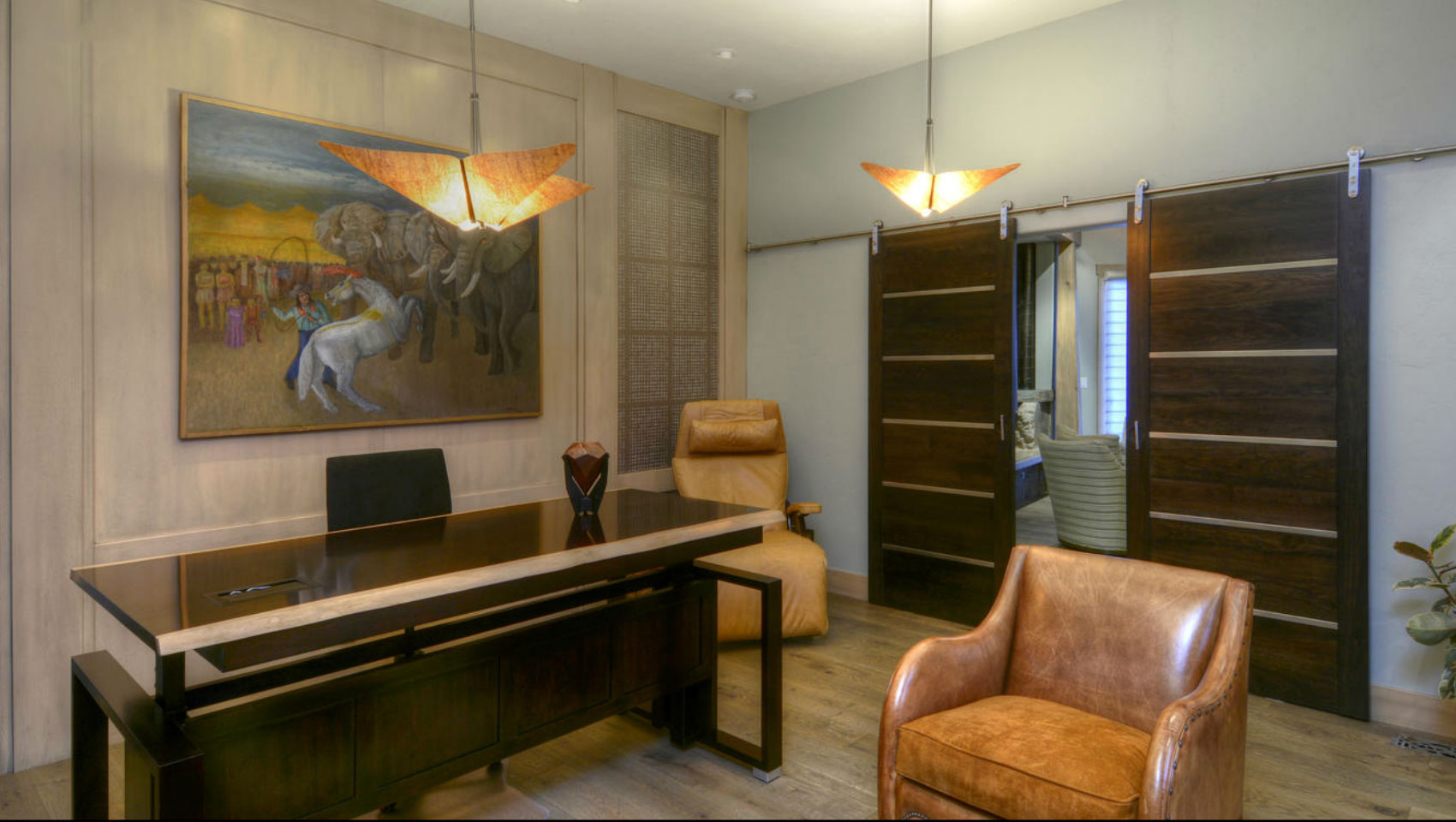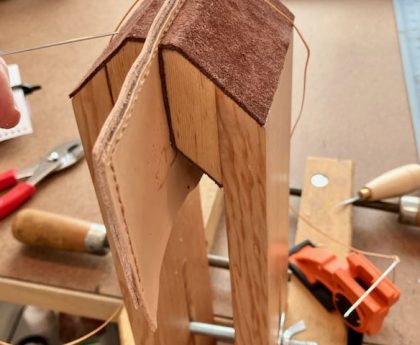1. Personal Style Preferences:
Choosing a style is a crucial step that defines the visual identity of your custom furniture. Begin by reflecting on your personal preferences and the overall style you envision for your living space. Whether it’s a classic like craftsman style, or modern, mid-century, or a fusion of styles, this decision sets the tone for the entire design process.
2. Style Influences Shape:
While the style might not jump out at you immediately, it plays an important role in determining the shape and form of your custom-designed furniture. Classic styles often feature well-defined and recognizable lines. Understanding a style’s shapes and lines within the framework ultimately influences the shape of the furniture you are designing and helps create a cohesive look that aligns with your taste.
3. Classic vs. Modern Appeal:
Consider the appeal of classic lines, the sophistication of a sleek modern look, or the timeless charm of mid-century modern styles. For example, shaker chairs represent a classic shape that withstands the test of time, seamlessly transitioning into modern spaces. Deciding on the overall appeal guides you towards a design that resonates with your sensibilities.
4. Space Considerations:
The available space can also influence the choice of style. If you’re working with a compact area, opting for a modern look can offer streamlined and space-efficient options. Understanding the spatial constraints ensures that the chosen style not only looks good but also fits seamlessly within the room, which is why I started this article about measuring your space and the existing furniture within it. A sense of scale and proportion is one of the most important aspects of furniture design.
5. Material Selection:
As you delve into the design process, consider the material for your custom furniture. Natural woods, with their timeless appeal and warm color pallet, complement various paint and fabric colors. The choice of material not only influences the aesthetics but also contributes to the durability and longevity of the piece; you can’t go wrong with solid wood furniture.
6. Cohesive Design Language:
The selected style should contribute to a cohesive design language within your home. Whether it’s a harmonious blend of classic and modern elements or a commitment to a singular style, maintaining consistency across your furniture choices enhances the overall visual unity of your space.
Choosing a style for your custom furniture is a highly personal decision that sets the design tone for your living space. It involves aligning your preferences, understanding the influence of style on the piece’s shape, considering spatial constraints, and selecting materials that enhance both aesthetics and functionality. By thoughtfully navigating these considerations, you can embark on creating a custom piece that not only suits your taste but also integrates seamlessly into your home.
Focusing on the Feel of Your Custom Furniture Design
1. Practicality and Lifestyle:
When selecting materials and finishes for your custom furniture, it’s crucial to factor in the practical aspects of your lifestyle. Consider where the furniture will be placed and who will be using it. If you have pets, such as cats, you may want to go the solid wood furniture route, supposed to upholstery, as pet claws easily snag upholstery. If the dining table is destined for kids’ coloring and crafting, consider applying a strong finish to the tabletops that are easy to wipe clean and can take a beating.
2. Longevity and Timeless Appeal:
Look to the future when choosing colors and patterns. While bold hues and intricate patterns might be appealing initially, consider whether you can live with them for an extended period. Neutral shades often age well and have a timeless quality, making them a safe and versatile choice that can adapt to evolving design trends over the years.
3. Selections That Get Better With Age:
Leather upholstery proves to be a durable and low-maintenance choice. Its natural shades lend themselves well to various design schemes, and over time, leather tends to develop a rich patina, enhancing its visual appeal. The material also becomes softer and more comfortable with use. This natural aging process adds character to the furniture, making it suitable for both casual family rooms and more upscale sitting areas.
4. Coherence in Design:
Ensure that your upholstery choices contribute to the overall coherence of your design. Whether you opt for synthetic fabrics for practicality or leather for durability, maintaining a consistent theme in color and material across your custom pieces enhances the visual unity of your space.
6. Personal Comfort and Style:
Consider your personal comfort and style preferences. While practical considerations are essential, the feel of natural wood and the texture of upholstery should align with your tactile preferences. Whether it’s the softness of fabric, the supple feel of leather, or the smoothness of wood, choose materials that resonate with your sense of comfort and aesthetics.
Focusing on the feel of your custom furniture involves a thoughtful analysis of practicality, functionality, durability, and personal style. By carefully selecting your materials, colors, and patterns, you can create custom furniture pieces that not only enhance the aesthetic appeal of your home but also cater to your household’s specific needs and lifestyle.
Finally, Focus on the Details Within Your Custom Furniture:
Custom furniture, by its nature, is already distinct, but the magic lies in the details. It’s the specific choices you make in the finer elements that genuinely showcase your personal style. This attention to detail transforms your furniture from merely functional pieces to statements uniquely representing you.
1. Accents for Subtle Elegance:
Small accents can have a big impact. Brass and other metals add a subtle shine to the room, elevating its elegance. These thoughtful details contribute to the overall aesthetic, creating a sense of refinement that goes beyond the basic function of the furniture. Dovetailed drawers show off the craftsman’s skill and attention to detail, as well as create a strong hidden gem when opening a drawer. Inlaying bowties over a crack in the wood shows respect to nature by celebrating the flaw in the wood through the ornamentation of the bowtie.
2. Complementary Home Accents:
Beyond the furniture itself, consider the home accents that will complement and enhance the presence of your custom pieces. Textiles, carefully chosen in terms of color and texture, finish the look of a sofa or armchair. Custom lighting fixtures such as chandeliers, pendant lights, and sconces can illuminate a custom dining table, adding both functionality and visual appeal.
3. Finishing Touches with Rugs:
The right area rug is a powerful finishing touch that can pull together the entire room. It not only adds warmth and comfort but also serves as an anchor, tying together the various elements in the space. Consider the color, pattern, and texture of the rug to ensure it complements your custom furniture. Area Rugs are also a great way to define a space, such as a sitting area, or prevent another material from being overwhelming, such as a wood coffee table on a wood floor.
4. Thoughtful Consideration:
In the realm of custom furniture, every detail matters. Thoughtful consideration of the legs, finishes, accents, and complementary accessories contributes to the creation of a space that is not only functional but also an embodiment of your unique style and taste.
Focusing on details is about elevating your custom furniture from the ordinary to the extraordinary. It involves a meticulous consideration of legs, finishes, accents, and complementary accessories, all of which collectively contribute to the creation of a space that is not only uniquely yours but also visually captivating and thoughtfully designed.
Consider collaborating with a professional furniture designer. Not everyone has the skills or time to design furniture from scratch. Working with a designer can help bring your vision to life and ensure the final product is both functional and aesthetically pleasing.





